Lallart M. Ferroelectrics: Characterization and Modeling
Подождите немного. Документ загружается.


A General Conductivity Expression for
Space-charge-limited Conduction in Ferroelectrics and Other Solid Dielectrics
479
Using an ideal-gas approximation for each of the two types of free charge-carriers, i.e.
(,) (,) (,)
pBp
Pxt kTxtC xt
(56)
and
(,) (,) (,)
nBn
Pxt kTxtC xt
(57)
where k
B
is the Boltzmann constant and T(x,t) is a generally position- and time-dependent
local temperature, the diffusion-current density can be expressed as
(,)
()
(,) (,)
(,)
[()]
(,)
() (,) [ ()] (,)
p
p
dB
n
n
Bppnn
Cxt
x
x
Jxt kTxt
Cxt
x
x
Txt
k xCxt xCxt
x
(58)
where
,
() (,)
(,)
pB
op
xkTxt
Dxt
q
(59)
and
,
[()](,)
(,)
()
nB
on
xkTxt
Dxt
q
(60)
are the Einstein relations for the local diffusion coefficients of p-type and n-type free
charge-carriers, respectively. Using the definitions in Eqs. (49) and (52), Eq. (58) can be
rewritten as
()
[() ()]
(,) (,)
(,)
(,)
() ()
[() ()] ()
(,)
() (,) () (,)
in
pn
dB
pn
pnin
B
pn
dC x
xx
dx
Jxt kTxt
pxt
nxt
xx
xx
xxCx
Txt
k
xpxt xnxt
x
(61)
From Eqs. (21) and (22), we obtain
2
2
1(,)
(,) ()
2
1(,)
()
2
in
in
Dxt
pxt C x
qx
Dxt
Cx
qx
(62)
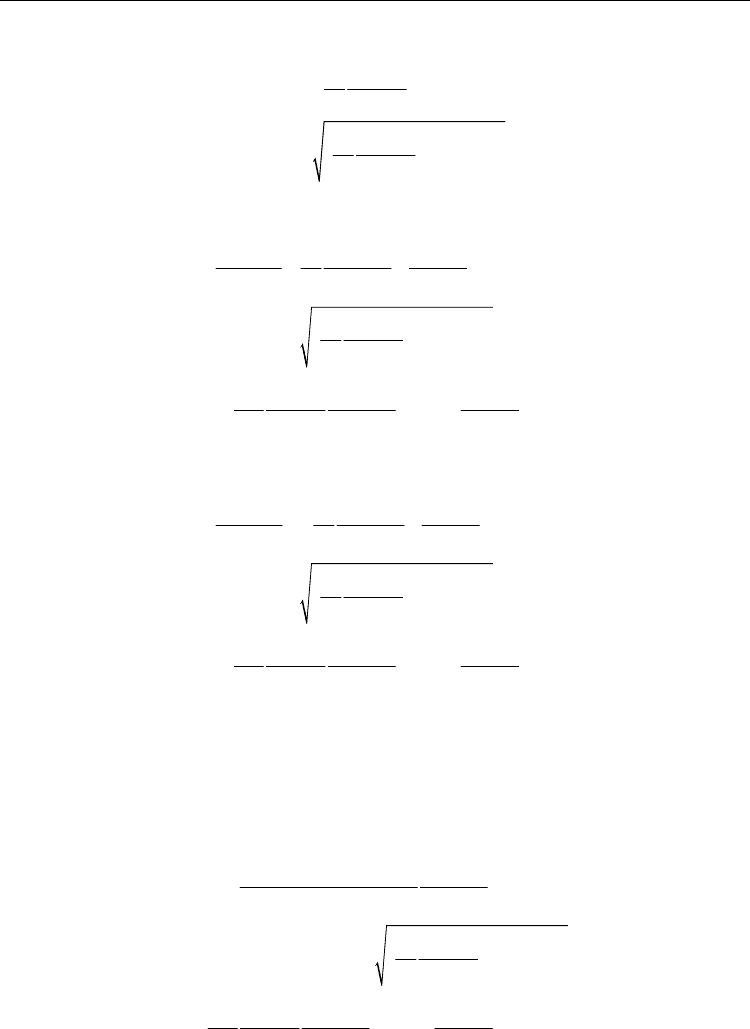
Ferroelectrics - Characterization and Modeling
480
and
2
2
1(,)
(,) ()
2
1(,)
()
2
in
in
Dxt
nxt C x
qx
Dxt
Cx
qx
(63)
Differentiating Eqs. (62) and (63) with respect to x yields
2
2
1
2
2
2
22
(,)
()
1(,)
2
1(,)
()
2
()
1(,)(,)
()
4
in
in
in
in
pxt
dC x
Dxt
xq dx
x
Dxt
Cx
qx
dC x
Dxt Dxt
Cx
xdx
qx
(64)
and
2
2
1
2
2
2
22
()
(,) 1 (,)
2
1(,)
()
2
()
1(,)(,)
()
4
in
in
in
in
dC x
nxt Dxt
xq dx
x
Dxt
Cx
qx
dC x
Dxt Dxt
Cx
xdx
qx
(65)
respectively. Putting Eqs. (62) to (65) into Eq. (61), we obtain a general expression for the
local diffusion-current density:
12
(,) (,) (,)
dd d
Jxt J xt J xt
(66)
where
2
1
2
1
2
2
2
22
(,)[ () ()]
(,)
(,)
2
1(,)
[() ()] (,) ()
2
()
1(,)(,)
()
4
Bpn
d
pnB in
in
in
kTxt x x
Dxt
Jxt
q
x
Dxt
xxkTxt Cx
qx
dC x
Dxt Dxt
Cx
xdx
qx
(67)
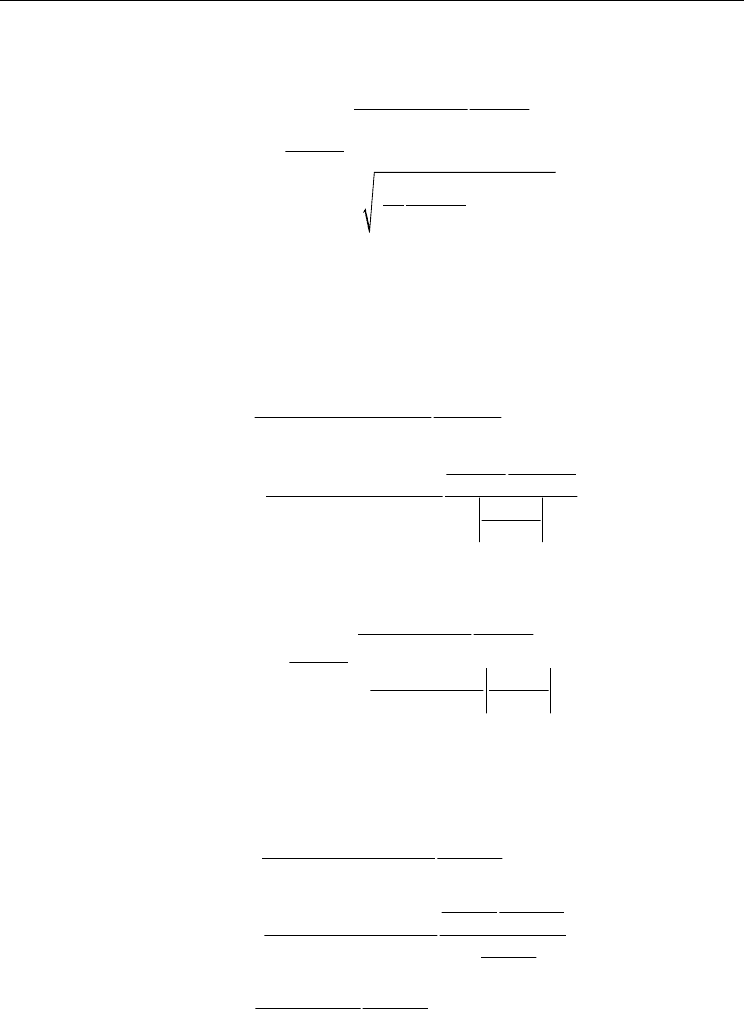
A General Conductivity Expression for
Space-charge-limited Conduction in Ferroelectrics and Other Solid Dielectrics
481
and
2
2
2
[() ()]
(,)
2
(,)
(,) [ () ()]
1(,)
()
2
pn
dB pn
in
xx
Dxt
qx
Txt
Jxt k x x
x
Dxt
Cx
qx
(68)
Eq. (67) denotes a contribution to the diffusion current from the presence of a gradient in the
space-charge density or in the intrinsic free-carrier concentration, while Eq. (68) denotes a
contribution from the presence of a temperature gradient. At the limit of zero intrinsic
conductivity, we have C
in
(x) 0 as explained in the beginning of the previous section. Eqs.
(67) and (68) are then reduced to
2
1
2
2
2
[() ()] (,)
(,)
(,)
2
(,) (,)
[() ()] (,)
(,)
2
pnB
d
pnB
xxkTxt
Dxt
Jxt
q
x
Dxt Dxt
xxkTxt
x
x
Dxt
q
x
(69)
and
2
[() ()]
(,)
2
(,)
(,)
[() ()]
(,)
2
pn
dB
pn
xx
Dxt
qx
Txt
Jxt k
xx
x
Dxt
qx
(70)
respectively. Similar to the case of Eq. (44), for Eqs. (69) and (70) we can also verify that in
the case of σ
in
(x) 0 the charge mobility is correctly equal to that of the dominant type of
free carriers. Following Eqs. (69) and (70), if Eq. (42) is satisfied, we have
2
x
)t,x(D
2
q
)t,x(T
B
k)x(
p
x
)t,x(D
2
x
)t,x(D
2
x
)t,x(D
q2
)t,x(T
B
k)]x(
n
)x(
p
[
2
x
)t,x(D
2
q2
)t,x(T
B
k)]x(
n
)x(
p
[
)t,x(
1d
J
(71)
and

Ferroelectrics - Characterization and Modeling
482
2
[() ()]
(,)
2
(,)
(,)
[() ()]
(,)
2
()
(,) (,)
pn
dB
pn
pB
xx
Dxt
qx
Txt
Jxt k
xx
x
Dxt
qx
xk
Dxt Txt
qxx
(72)
Else if Eq. (43) is satisfied, we have
2
1
2
2
2
2
2
[() ()] (,)
(,)
(,)
2
(,) (,)
[() ()] (,)
(,)
2
() (,)
(,)
pnB
d
pnB
nB
xxkTxt
Dxt
Jxt
q
x
Dxt Dxt
xxkTxt
x
x
Dxt
q
x
xkTxt
Dxt
q
x
(73)
and
2
[() ()]
(,)
2
(,)
(,)
[() ()]
(,)
2
()
(,) (,)
pn
dB
pn
nB
xx
Dxt
qx
Txt
Jxt k
xx
x
Dxt
qx
xk
Dxt Txt
qxx
(74)
7. Alternative derivation of the general local conductivity expression
We begin our alternative derivation of the general local conductivity expression in Eq. (34)
by identifying the following quantities that appear in the conductivity expression:
() ()
'( )
2
pn
xx
x
(75)
and
() ()
"( )
2
pn
xx
x
(76)
The drift velocities of p-type and n-type free carriers can then be expressed as
(,) ()(,) '()(,) "()(,)
pp
v xt xExt xExt xExt
(77)
and

A General Conductivity Expression for
Space-charge-limited Conduction in Ferroelectrics and Other Solid Dielectrics
483
(,) ()( ,) '( )(,) "()( ,)
nn
v xt xExt xExt xExt
(78)
where
"( ) '( ) 0xx
(79)
and µ’(x) can be positive or negative. In this description, both p-type and n-type free carriers
share the same velocity component µ’(x)E(x,t), with the presence of the additional velocity
components µ“(x)E(x,t) and -µ“(x)E(x,t) for p-type and n-type free carriers, respectively. The
generally time-dependent local electrical conductivity can then be expressed as a sum of
contributions from the velocity components µ’(x)E(x,t) and ±µ“(x)E(x,t):
(,) '()[ (,) (,)]
"( )[ ( , ) ( , )]
pn
pn
xt q x C xt C xt
q
xC xt C xt
(80)
According to Gauss’ law, the density of free space-charge is given by
(,)
(,) [ (,) (,)]
qpn
Dxt
xt qC xt C xt
x
(81)
In the absence of free space-charge, i.e. ρ
q
(x,t) = 0, both C
p
(x,t) and C
n
(x,t) are by definition
equal to the intrinsic free-carrier concentration C
in
(x), and the electrical conductivity σ(x,t)
would then be equal to the intrinsic conductivity
() 2 "() ()
in in
xqxCx
(82)
according to Eq. (80).
Consider the reversible generation and recombination of p-type and n-type free carriers:
1 source particle
1 p-type free carrier + 1 n-type free carrier
As described right below Eq. (18), the rate of free-carrier generation is assumed to be equal
to the rate of free-carrier recombination due to a “heat balance“ condition, and the rate of
each of these processes is assumed to be proportional to the product of the “reactants“.
Following these, for C
s
(x,t) being the concentration of the source particles for free-carrier
generation (e.g. valence electrons or molecules) we have
(,) (,) (,)
gs rp n
KC xt KC xtC xt
(83)
where K
g
and K
r
are, respectively, the rate constants for the generation and recombination of
free carriers. If the conditions
(,) (,)
ps
Cxt Cxt
(84)
and
(,) (,)
ns
Cxt Cxt
(85)
hold for a dielectric insulator such that

Ferroelectrics - Characterization and Modeling
484
(,) ()
ss
Cxt Cx
(86)
i.e. the concentration of source particles for free-carrier generation has an insignificant
fluctuation with time and is practically a material-pertaining property, we have
2
() (,) (,) ()
gs rp n rin
KC x KC xtC xt KC x (87)
which implies
2
(,) (,) ()
pn in
CxtCxt C x (88)
As an example, we show that this mass-action approximation is valid for a dielectric
insulator which has holes and free electrons as its p-type and n-type free charge-carriers,
respectively, and which has valence electrons as its source particles: A hole is by definition
equivalent to a missing valence electron. At anywhere inside the dielectric sample, the
generation and annihilation of a hole correspond, by definition, to the annihilation and
generation of a valence electron, respectively, and the flow-in and flow-out of a hole are,
respectively, by definition equivalent to the flow-out and flow-in of a valence electron in the
opposite directions. Therefore,
(,)
(,)
p
s
Cxt
Cxt
tt
(89)
so that the total concentration of holes and valence electrons is given by
() (,) (,)
ps p s
CxCxtCxt
(90)
Eq. (83) can then be written as
[ () (,)] ( ,) ( ,)
gps p rp n
KC x Cxt KCxtCxt
(91)
For the case of zero space charge where C
p
(x,t) = C
n
(x,t) = C
in
(x), we have
2
[() ()] ()
gps in rin
KC x C x KC x
(92)
Define a material paramter
()
() 1
()
in
ps
Cx
x
Cx
(93)
and consider the limit of (x)
0 for the case of a dielectric insulator. Combining Eqs. (91)
to (93), we obtain the mass-action relation in Eq. (88):
() 0
2
(,) (,)
()[ () () (,)]
()
[1 ( )]
x
pn
in in p
in
CxtCxt
CxCx xCxt
Cx
x
limit
(94)
Going back to our derivation of the conductivity expression, we notice that Eqs. (81) and
(88) together imply
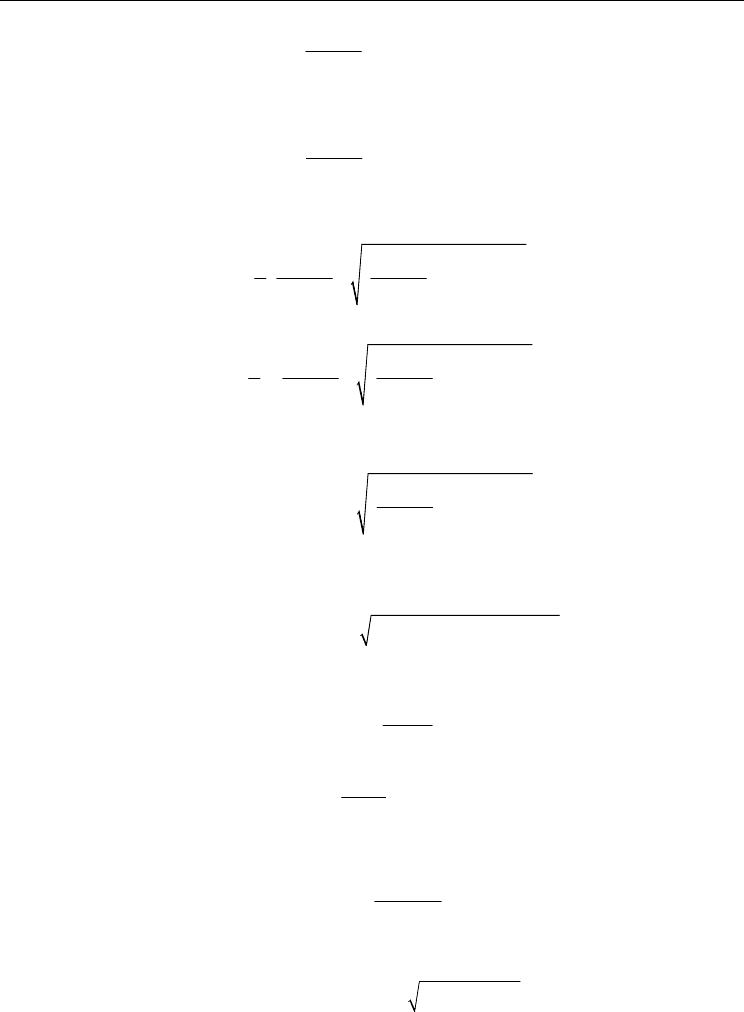
A General Conductivity Expression for
Space-charge-limited Conduction in Ferroelectrics and Other Solid Dielectrics
485
22
(,)
(,) (,) () 0
q
ppin
xt
Cxt Cxt C x
q
(95)
and
22
(,)
(,) (,) () 0
q
nnin
xt
Cxt Cxt C x
q
(96)
from which we obtain
2
2
(,) (,)
1
(,) 4 () 0
2
qq
pin
xt xt
Cxt C x
qq
(97)
2
2
(,) (,)
1
(,) 4 () 0
2
qq
nin
xt xt
Cxt C x
qq
(98)
and
2
2
(,)
(,) (,) 4 ()
q
pn in
xt
Cxt Cxt C x
q
(99)
Using Eqs. (80) to (82) as well as Eq. (99), we obtain the following expression for the
generally time-dependent local electrical conductivity:
22
(,) '() (,) [ "() (,)] ()
qqin
xt x xt x xt x
(100)
By defining the reduced paramters
(,)
(,)
()
in
xt
xt
x
(101)
'( )
() 1,1
"( )
x
x
x
(102)
and
(,)
(,)
2()
q
q
in
xt
xt
qC x
(103)
Eq. (100) can be expressed in a simpler form:
2
(,) () (,) [ (,)] 1
qq
xt x xt xt
(104)
For the limiting case of zero intrinsic conductivity with C
in
(x) 0, Eqs. (97) and (98) can be
rewritten as
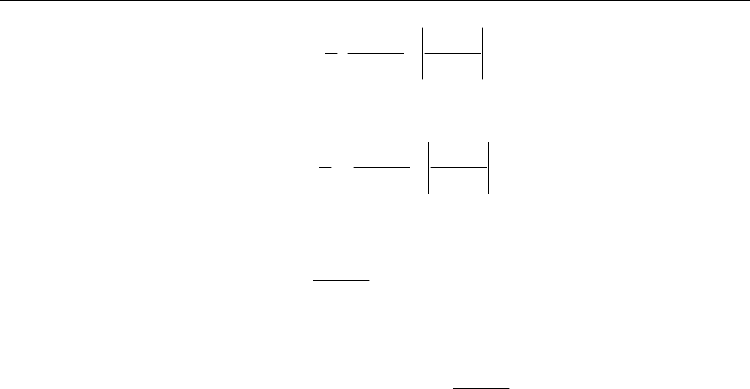
Ferroelectrics - Characterization and Modeling
486
(,) (,)
1
(,)
2
qq
p
xt xt
Cxt
qq
(105)
and
(,) (,)
1
(,)
2
qq
n
xt xt
Cxt
qq
(106)
respectively, which imply the dominance of either type of free carriers: If ρ
q
(x,t) > 0, we have
(,)
(,) (,) 0
q
pn
xt
Cxt andCxt
q
(107)
Else if ρ
q
(x,t) < 0, we have
(,)
(,) 0 (,)
q
pn
xt
Cxt andCxt
q
(108)
8. Conclusions and future work
In this Chapter, a generalized theory for space-charge-limited conduction (SCLC) in
ferroelectrics and other solid dielectrics, which we have originally developed to account for
the peculiar observation of polarization offsets in compositionally graded ferroelectric films,
is presented in full. The theory is a generalization of the conventional steady-state trap-free
SCLC model, as described by the Mott-Gurney law, to include (i) the presence of two
opposite types of free carriers: p-type and n-type, (ii) the presence of a finite intrinsic
(Ohmic) conductivity, (iii) any possible field- and time-dependence of the dielectric
permittivity, and (iv) any possible time dependence of the dielectric system under study.
Expressions for the local conductivity as well as for the local diffusion-current density were
derived through a mass-action approximation for which a detailed theoretical justification is
provided in this Chapter. It was found that, in the presence of a finite intrinsic conductivity,
both the local conductivity and the local diffusion-current density are related to the space-
charge density in a nonlinear fashion, as described by Eqs. (34), (66), (67) and (68), where the
local diffusion-current density is generally described as a sum of contributions from the
presence of a charge-density gradient and of a temperature gradient. At the limit of zero
intrinsic conductivity, it was found that either p-type or n-type free carriers are dominant.
This conclusion
provides a linkage between the independent assumptions of (i) a single
carrier type and (ii) a negligible intrinsic conductivity in the conventional steady-state SCLC
model. For any given space-charge density, it was also verified that the expressions we have
derived correctly predict the dominant type of free carriers at the limit of zero intrinsic
conductivity.
Future work should be carried out along at least three possible directions: (i) As a further
application of this general local conductivity expression, further numerical investigations
should be carried out on how charge actually flows inside a compositionally graded
ferroelectric film. This would provide answers to interesting questions like: Does a graded
ferroelectric system exhibit any kind of charge-density waves upon excitation by an

A General Conductivity Expression for
Space-charge-limited Conduction in Ferroelectrics and Other Solid Dielectrics
487
alternating electric field? What are the physical factors (dielectric permittivity, carrier
mobility, etc.) that could limit or enhance the degree of asymmetry in the SCLC currents of a
graded ferroelectric film? The latter question has been partially answered by ourselves
(Zhou et al., 2005b), where we have theoretically found that the observation of polarization
offsets, i.e. the onset of asymmetric SCLC, in a compositionally graded ferroelectric film is
conditional upon the presence of relatively large gradients in the polarization and in the
dielectric permittivity. Certainly, a detailed understanding of the mechanism of asymmetric
electrical conduction in such a graded ferroelectric film would also provide insights into the
designing of new types of electrical diodes or rectifiers. The recently derived expression for
the local diffusion-current density, as first presented in this Book Chapter (Eqs. (66) to (68)),
has also opened up a new dimension for further theoretical investigations: Using this
expression, the effect of charge diffusion in the presence of a charge-density gradient or a
temperature gradient can be taken into account as well, and a whole new range of problems
can be studied. For example, it would be interesting to know whether asymmetric electrical
conduction would also occur if a compositionally graded ferroelectric film is driven by a
sinusoidal applied temperature difference instead of a sinusoidal applied voltage. In this
case, one also needs to take into account the temperature dependence of the various system
parameters like the remanent polarization and the dielectric permittivity. The theoretical
predictions should then be compared against any available experimental results. (ii)
Going back to the generalized SCLC theory itself, it would be important to look for
possible experimental verifications of the general local conductivity expression, and to
establish a set of physical conditions under which the conductivity expression and the
corresponding mass-action approximation are valid. Theoretical predictions from the
conductivity expression should be made for real experimental systems and then be
compared with available experimental results. It would also be worthwhile to generalize
the mass-action approximation, and hence the corresponding local conductivity
expression, to other cases where the charge of the free carriers, or the stoichiometric ratio
between the concentrations of p-type and n-type free carriers in the generation-
recombination processes, is different. (iii) In the derivation of the Mott-Gurney law J ~ V²,
the boundary conditions E
p
(0) = 0 and E
n
(L) = 0 were employed to describe the cases of
conduction by p-type and n-type free carriers, respectively. If we keep E
p
(0) or E
n
(L) as a
variable throughout the derivation, an expression of J as a function of E
p
(0) or E
n
(L) can be
obtained and it can be shown that both the boundary conditions E
p
(0) = 0 and E
n
(L) = 0
correspond to a state of maximum current density. As an example, for the case of
conduction by p-type free carriers, we have (Fig. 2)
32
2
2
2
3
912(0)
16
912(0)
3
(0) [1 (0)]
16 4
pp
p
p
p
pp
JL e
j
V
e
ee
(109)
where e
p
(0) ≡ E
p
(0)L/V. If we consider our general local conductivity expression which takes
into account the presence of a finite intrinsic conductivity and the simultaneous presence of
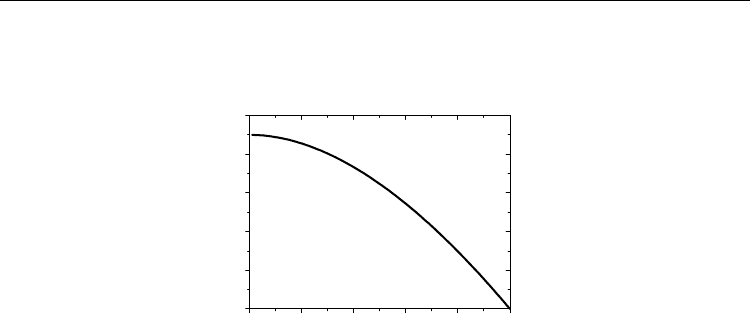
Ferroelectrics - Characterization and Modeling
488
p-type and n-type free carriers, it would be important to know whether this maximum-
current principle can be generally applied to obtain the system’s boundary conditions.
0.0 0.2 0.4 0.6 0.8 1.0
0.00
0.25
0.50
0.75
1.00
1.25
j
p
e
p
(0)
Fig. 2. Plot of j
p
against e
p
(0), showing a maximum of j
p
at e
p
(0) = 0.
9. Acknowledgments
Stimulating discussions with Prof. Franklin G. Shin, Dr. Chi-Hang Lam and Dr. Yan Zhou
are gratefully acknowledged.
10. References
Alpay, S. P.; Ban, Z. G. & Mantese, J. V. (2003). Thermodynamic Analysis of Temperature-
graded Ferroelectrics. Applied Physics Letters, Vol. 82, pp. 1269 – 1271 (February
2003), ISSN 1077-3118
Bao, D.; Mizutani, N.; Zhang, L. & Yao, X. (2001). Composition Gradient Optimization and
Electrical Characterization of (Pb,Ca)TiO
3
Thin Films. Journal of Applied Physics, Vol.
89, pp. 801 – 803 (January 2001), ISSN 1089-7550
Bao, D.; Wakiya, N.; Shinozaki, K.; Mizutani, N. & Yao, X. (2001). Abnormal Ferroelectric
Properties of Compositionally Graded Pb(Zr,Ti)O
3
Thin Films with LaNiO
3
Bottom
Electrodes. Journal of Applied Physics, Vol. 90, pp. 506 – 508 (July 2001), ISSN 1089-
7550
Bao, D.; Mizutani, N.; Yao, X. & Zhang, L. (2000). Structural, Dielectric, and Ferroelectric
Properties of Compositionally Graded (Pb,La)TiO
3
Thin Films with Conductive
LaNiO
3
Bottom Electrodes. Applied Physics Letters, Vol. 77, pp. 1041 – 1043 (August
2000), ISSN 1077-3118
Bao, D.; Mizutani, N.; Yao, X. & Zhang, L. (2000). Dielectric and Ferroelectric Properties
of Compositionally Graded (Pb,La)TiO
3
Thin Films on Pt/Ti/SiO
2
/Si
Substrates. Applied Physics Letters, Vol. 77, pp. 1203 – 1205 (August 2000), ISSN
1077-3118
Bao, D.; Yao, X. & Zhang, L. (2000). Dielectric Enhancement and Ferroelectric Anomaly of
Compositionally Graded (Pb,Ca)TiO
3
Thin Films Derived by a Modified Sol-gel
Technique. Applied Physics Letters, Vol. 76, pp. 2779 – 2781 (May 2000), ISSN 1077-
3118
